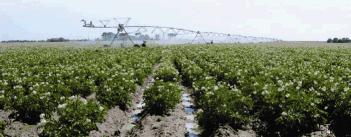| |
Current Irrigation Management Practices | |
| |
|
|
| |
|
|
| | Background
To what extent are on-farm irrigation managers applying irrigation water to their crops, relative to optimum production levels?
The need for updating this information has become more critical as water supplies in southern Alberta are fully allocated in some reaches of the South Saskatchewan River Basin and nearing full allocation in others. A previous five-year study from 1996 to 2000 monitored field irrigation applications and determined that producers were meeting 84% of the water requirements needed for optimum crop production in southern Alberta.
A second Current Irrigation Management Practices study was initiated in 2007. This study, referred to as “CIMP2”, collected field data from 2007 to 2009 in six irrigation districts to monitor irrigation management practices. The CIMP2 report summarizes the findings of the recent monitoring study.
Study Objectives
- To determine the current irrigation water management and water use of crops grown in southern Alberta in fields irrigated with low-pressure pivots and with pipeline delivery.
- To compare actual crop water use with optimum crop water use as determined in the Alberta Irrigation Management Model (AIMM).
- To examine the relationship of irrigation water management with producer-reported crop yields for the monitored fields.

Reports
Full Report
LOPAC Technical Factsheet
LOPAC Technical Report
Acknowledgements
This project was made possible with funding support from the Canada-Alberta Water Supply and Expansion Program. The assistance of the participating irrigation districts and the cooperating producers in this study is greatly appreciated.
|
|
| |
|
|
| |
For more information about the content of this document, contact Jennifer Nitschelm.
This document is maintained by .
This information published to the web on June 23, 2011.
Last Reviewed/Revised on March 31, 2014.
|
|